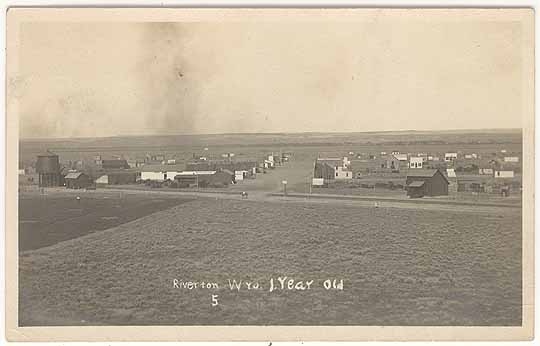
Riverton, Wyo., View from top of water tank, 1907
lThe railroad depot to the right of center was construction in 1907 and is on the National Register. In addition to passenger
waiting areas, it included residential quarters for the railroad agent.
The history of Riverton is tied to the Wind River Reservation and to irrigation. In
1868, the United States entered into a treaty with the Shoshone under which a Reservation of
some 3,000,000 acres was created. Over the years, under separate treaties the
Reservation was slowly eaten away. The last major cession was in 1905, under which there was to
be a per capita payment to each Indian and there would be created an
irrigation system, a school district, and a welfare and improvement fund would
be created. In conjunction with the proposed opening of the ceded lands for settlement, the
Chicago and Northwestern proposed to extend their line. On August 15, 1906, the lands were opened for
settlement with the most desirable location being near where the railroad was to be located.
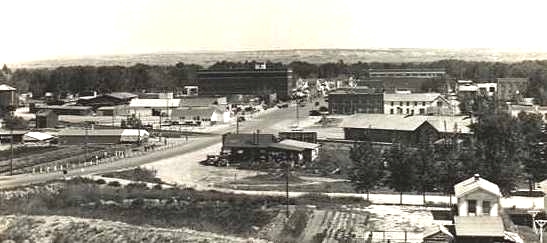
Riverton, undated, from top of water tank. Compare with
top photo.
A plat was prepared by a young engineer with the United States Surveyor General's office, Francis "Frank" Hayford Allyn."
(1875-1957). Allyn served as the first postmaster for the new town. Later he was
employed by the Wyoming Highway Department. Lots in the new town were allocated by lottery.
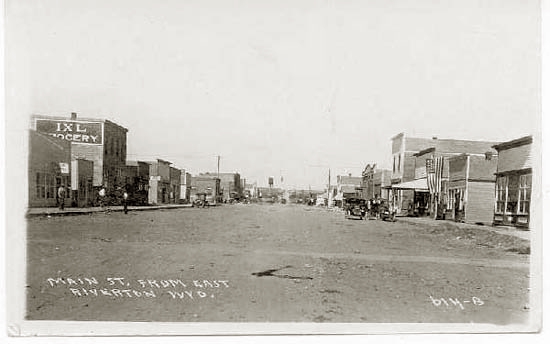
Main Street, Riverton, 1910, looking west
In short order a municipality, school board, baseball clubs, a Free Public Library Commission, and
fraternal orders were formed. The town had two livery stables, hotels, newspaper, two banks, and
two lumber companies. From the Laiblin and Johnson Livery Stable the stage left twice a week on Tuesdays and
Fridays for Kinnear. The town rapidly became the center of commerce leaving older
Shoshoni behind.
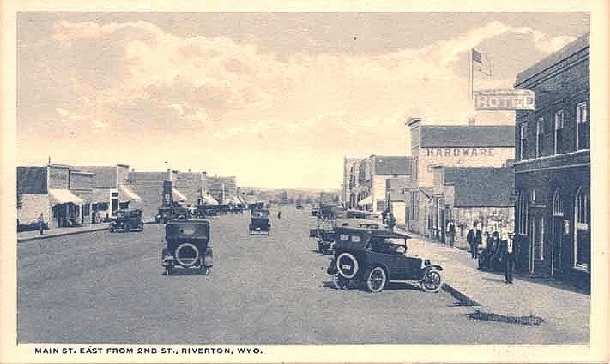
Main Street, Riverton, approx. 1920
Initially, irrigation was to be provided by the Wyoming Central Irrigation Company, headed up by
Chicago salt mogul Joy Morton and former Governor Fenimore Chatterton. The demand for
irrigated lands proved to be less than expected. Thus, in the town of Morton, only 80 acres
of oats took advantage of the irrigation.
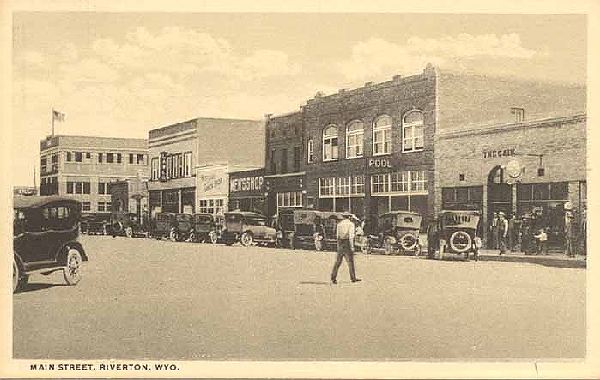
Riverton, 1920's
Thus, in 1910 the contract for irrigation was given to the Tallmadge-Buntin Company notwithstanding the company's
underwhelming success in Bosler. Ironically, the Dust Bowl and the Depression stirred interest in the area.
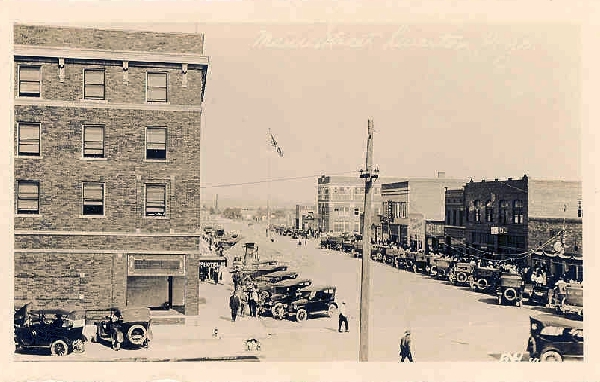
Riverton, 1920's
Next page: Riverton continued.
|





